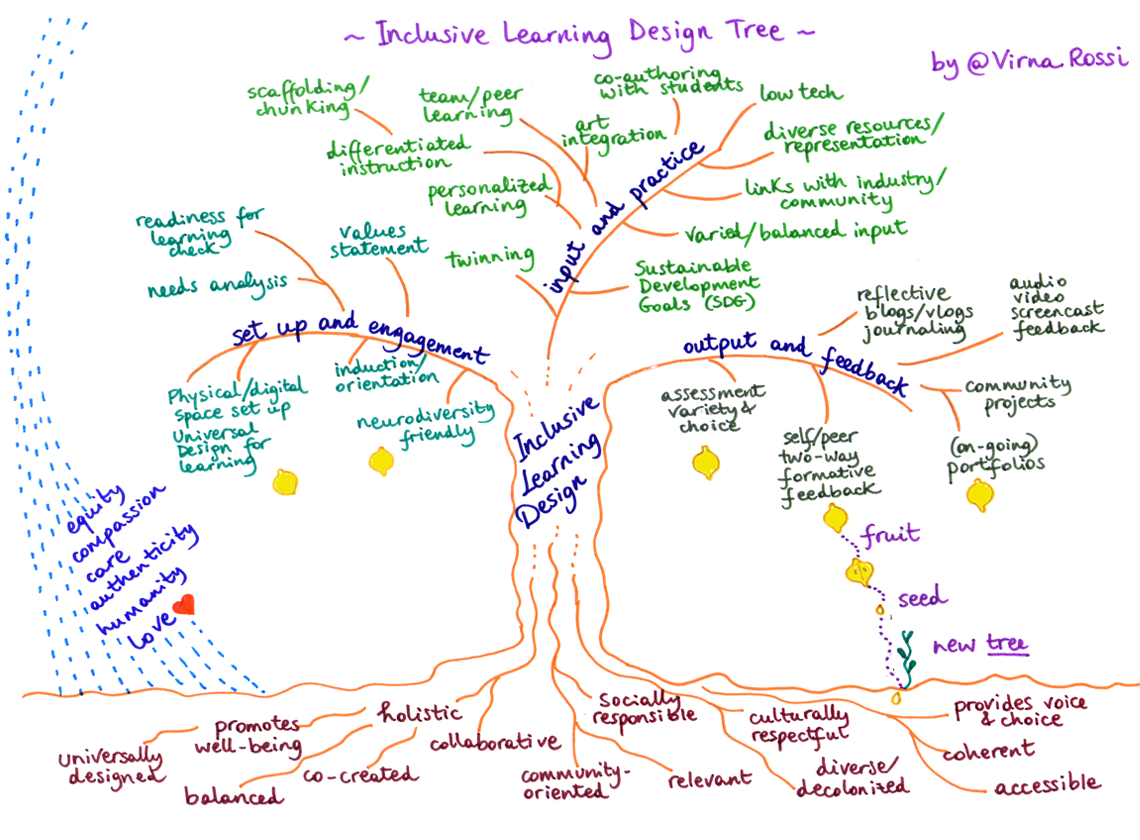Inclusive learning design is like a tree. Trees are alive, grow, change with the seasons, are resilient, release oxygen, have many branches and leaves, many bear fruit, they last, they are a micro-cosmos of life. And they have roots. Roots matter. All of this can figuratively be applied to inclusive learning. Inclusive learning design is alive, grows, produces fruits and has roots.
Defining Inclusive Learning
But what does ‘inclusive learning design’ mean? Traditionally when we talk about inclusive education, many people think about learning difficulties or neurodiversity and how to include those students in mainstream education. However in recent years inclusivity has acquired a much broader meaning than accessibility, which of course is still a priority.
To me inclusive education means that each student – whatever their social status, age, religion or belief, ability, gender, language, ethnic or cultural origin – is valued equally, treated with respect and provided with real learning opportunities tailored to their individual needs as much as possible. My view of inclusivity it is that of a social model, more akin to an ethos or value than a method. It aims to grant each student full membership to education, to enable them to gain full membership to society later on.
In practice inclusive learning design to me is about planning ‘good teaching’ through the lens of inclusivity, at every stage.
Roots matter
Back to the roots. The roots of the inclusive learning design tree are a sub-set of values, finer grain principles which come under the inclusivity umbrella.
Inclusive learning design: promotes well-being; is holistic, co-created and collaborative; is community-oriented, socially responsible and relevant; is culturally respectful, diverse and decolonised; is balanced, coherent, provides voice and choice; is accessible.
These roots or many facets of inclusivity anchor and feed the tree, allow the branches, leaves and fruits to grow, year after year. Roots to shoots.
Fruits
The fruits of the tree are the obvious, visible manifestations or outcomes of the inclusive learning design process. These are the things that happen, in practice, when teaching and learning. It is what inclusivity looks like at ground level, in the classroom and how students experience it. Some of these fruits are:
Universal Design for Learning approach to all stages of learning, from set up to input and output; neurodiversity adjustments and differentiated instruction; peer and team learning; co-authoring with students, including the use of live documents; culturally and ethnically balanced or decolonised reading lists/resources; use of home language and integration of students’ own lived experience; links with industry and social projects; self-directed, personalised learning; variety and choice of assessment mode; portfolios and development of life-wide abilities; ongoing, dialogic, formative peer and teacher feedback.
Fruits are not only beautiful and useful but they also have seeds inside. They bear, in their core, the potential to produce, not simply more fruits but more trees…
Inclusivity fosters (more) inclusivity. The principles and practices mentioned in this blog have the potential to create more inclusive teachers, institutions and systems so that e very single student can thrive.
To learn more about inclusive learning design, watch my webinar below.


